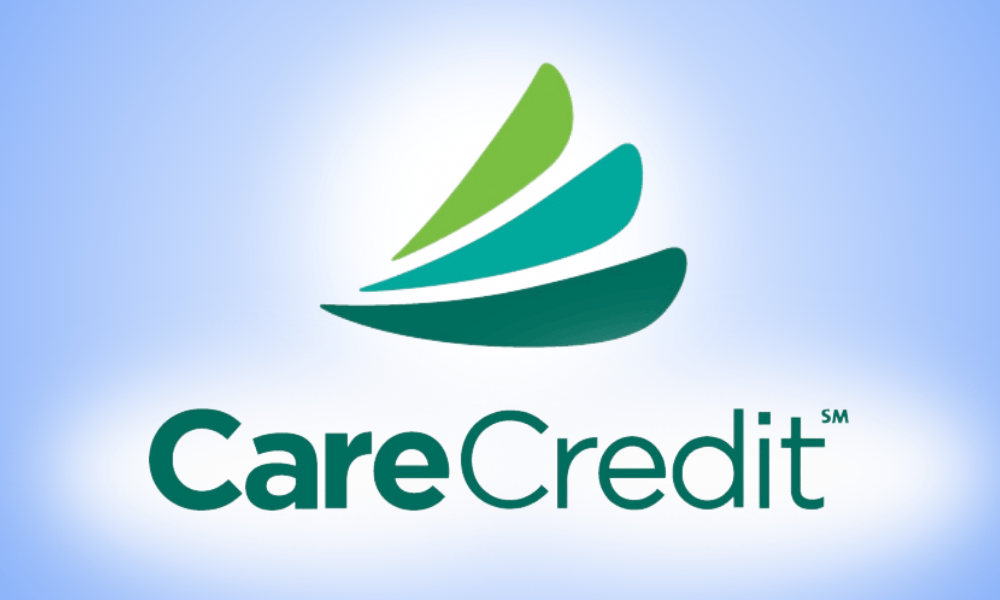Many patients ask: How much do braces cost? Understanding dental financing options is key for those researching adult braces, braces for kids, or alternatives such as clear aligners. From payment plan dentist options and dental loans to questions about Medicaid coverage, this guide explains practical ways to finance orthodontic treatment.
Table of contents
Dental Financing
Orthodontic treatment should not be postponed due to cost concerns. Whether considering braces for adults , braces for kids , or clear aligners , patients have access to multiple financing pathways. These include dental financing for individuals with poor credit, no-credit-check dental financing, CareCredit dental credit, and structured dentist payment plans. Orthodontists can also assist patients navigating Medicaid eligibility or self-pay options to ensure care remains affordable.
How to Apply for Dental Financing
Applying for dental loans or CareCredit is straightforward. Patients may apply online or during their orthodontic consultation. Many receive approval within minutes, enabling immediate start of treatment.
Steps to apply for dental financing:
Complete a CareCredit application online or in-office
Review additional dental financing options with the orthodontist
Select a payment plan that aligns with personal budget
Begin orthodontic treatment without delay
Pay monthly on a schedule that fits long-term financial planning
Choosing the right type of braces
Metal Braces
The blueprint for modern orthodontics — metal braces have outlasted every trend in teeth straightening for one reason: they work. Stainless steel brackets and wires apply consistent force to shift even the most stubborn teeth into alignment. Biomechanically proven for complex cases, this system delivers results where newer options can’t — sometimes, classics stay classic for a reason.

Ceramic Braces
Braces that blend in, not stand out. Translucent or tooth-colored ceramic brackets mimic the natural shade of your teeth while applying steady orthodontic force. Built for patients who want full-strength treatment with lower visibility — it’s straightening power without the metal glare.

Lingual Braces
For the private perfectionist. Lingual braces live on the back of the teeth, invisible to everyone but the orthodontist. Custom-designed with 3D technology, they apply targeted pressure to reposition teeth while keeping your treatment hidden — so the only thing that shows is your confidence.

Clear Aligners
Minimalist trays. Maximum impact. Clear aligners gradually guide teeth into place using computer-planned force maps and medical-grade polymers. With removable, nearly invisible trays, this approach offers a discreet path to straighter teeth — an orthodontic solution that fits modern life as easily as it fits your pocket.
Dental Insurance
For many patients, paying out of pocket remains the simplest, most flexible way to manage orthodontic costs. Paying directly allows you to choose any provider, treatment type, and timeline—without navigating insurance approvals or third-party financing. Many practices offer discounts for upfront payments or may waive certain administrative fees when patients opt to self-pay.

Private Insurance
Private dental insurance can significantly reduce orthodontic costs—but coverage varies widely across plans.
Is Invisalign covered by insurance?
Coverage for Invisalign depends on plan specifics. Some insurers treat clear aligners the same as traditional braces; others classify them as cosmetic and provide no coverage.
Patients should review their dental policy carefully and request a pre-treatment estimate from both their orthodontist and their insurer to confirm Invisalign coverage.
Does insurance cover braces?
Many dental insurance plans cover a portion of the cost of braces, typically for dependent children. Coverage amounts usually range from $1,000 to $3,000 and often apply only to medically necessary orthodontic care.
For adult braces, coverage is less common and may be excluded entirely or limited to a specific lifetime maximum.
Medicaid & HSAs
Medicaid offers an essential pathway to orthodontic care for low-income individuals and families, but coverage is highly variable by state and age group.
Does Medicaid cover dental braces?
In many states, Medicaid covers braces for children when the treatment is deemed medically necessary—such as in cases of severe malocclusion, jaw misalignment, or bite issues impacting health and function.
Coverage for adult braces under Medicaid is rare and typically requires demonstrating a medical—not cosmetic—need. Even when approved, Medicaid often restricts the type of braces covered (usually metal braces only).
Does Medicaid cover Invisalign?
Generally, Medicaid does not cover Invisalign treatment. Medicaid orthodontic benefits typically apply only to conventional metal braces and exclude clear aligners or other aesthetic-focused systems. Exceptions are rare and determined on a state-by-state basis.
Can you use HSA for dental braces?
Health Savings Accounts (HSAs) and Flexible Spending Accounts (FSAs) provide an additional layer of financial flexibility for orthodontic care. Both accounts allow pre-tax dollars to be used toward qualifying medical expenses, including braces and Invisalign — provided the treatment is deemed necessary for dental health, not purely cosmetic.
Funds from an HSA or FSA can cover orthodontic consultations, appliances, retainers, and related services. Patients should confirm coverage rules with their plan administrator and maintain detailed documentation of all charges.
Dental Loans
When insurance and Medicaid don’t cover treatment—or when patients prefer private pay with flexibility— dental loans provide another financing option.
A dental loan is an unsecured personal loan used to pay for orthodontic care. Patients can apply through banks, credit unions, or specialized healthcare lenders. Dental loans can be useful for covering large treatment balances or for patients without sufficient credit to qualify for CareCredit or in-house payment plans. Interest rates vary based on credit history and loan terms; comparison shopping is advised.

Dental Payment Plans
Many orthodontic practices offer in-house or third-party dental payment plans to help patients manage treatment costs over time.
A dental payment plan allows patients to pay for braces or Invisalign through monthly installments, often with no interest if the balance is paid within a set timeframe. Plans may be administered directly by the orthodontist or through third-party services.
Dental payment plans are ideal for families budgeting around insurance gaps or for adults pursuing elective orthodontic care. Patients should ask about eligibility, down payment requirements, and total costs before enrolling.
Dental Financing Options
Patients benefit from working with orthodontists who understand insurance guidelines. Verification of dental benefits ensures that coverage is fully utilized.
When insurance coverage is partial or unavailable, dental loans, credit cards, and structured dental payment plans can bridge the remaining costs. Among the most recognized tools is CareCredit, a healthcare-specific credit card.
Dental financing companies
Patients can now access a wide range of dental financing companies, both through partnerships offered by orthodontic practices and independently. Each provider has different terms regarding interest rates, fees, approval criteria, and loan limits. Patients should compare offers carefully and review total repayment costs before proceeding. Leading companies include:
CareCredit — Healthcare credit card offering promotional interest-free financing
LendingClub Patient Solutions — Personal loans and installment plans for dental and orthodontic care
Alphaeon Credit — Extended credit lines for aesthetic medical procedures including orthodontics
Sunbit — Point-of-sale financing often marketed toward patients with less-than-perfect credit
Dental financing with bad credit
For patients with lower credit scores, securing affordable dental financing can be more challenging — but not impossible. Several lenders specialize in dental financing with bad credit , offering secured loans or higher-interest installment plans with more flexible approval standards.
Dental financing no credit check
For patients seeking dental financing no credit check, options are more limited but still exist. Certain dental offices offer internal payment plans that do not require a credit pull — instead, they may rely on a down payment and verification of income or employment.
Pay Later for Dental Care
Additionally, some Buy Now, Pay Later (BNPL) services and point-of-sale financing platforms may offer no-credit-check approval for lower loan amounts, though these typically come with strict repayment timelines and late fees.
Patients considering no credit check dental financing should fully understand the repayment terms and avoid providers with predatory fees or unclear policies.
CareCredit application
CareCredit remains one of the most accessible financing tools for orthodontic care. Designed specifically for medical and dental expenses, CareCredit offers both short-term and long-term financing options:
Short-term plans: 6, 12, 18, or 24 months with no interest if paid in full within the promotional period
Long-term plans: 24, 36, 48, or 60 months with reduced APR and fixed monthly payments
The CareCredit application process is straightforward: patients can apply online or through their orthodontist’s office, often receiving instant approval. Approval depends on credit history, income, and current debt obligations.
How does CareCredit work for orthodontic treatment?
CareCredit offers one of the most accessible dental financing options. Patients can apply online, receive instant approval, and begin treatment prior to receiving their physical CareCredit card. Promotional periods often include no-interest options if the balance is paid in full within the designated timeframe.
Are dentist payment plans common?
Many dental offices now provide structured dental payment plans. Diamond Braces offers in-house financing and partnerships with providers such as CareCredit. Qualified patients may secure 0% interest dental loans. For those with lower credit scores, guaranteed dental financing or no-credit-check options may be available.
What dental procedures can I finance with CareCredit?
You can use CareCredit dental financing to cover the full range of orthodontic services. Treatments covered by CareCredit include metal braces, ceramic braces, lingual braces, clear aligners, Braces for kids and braces for adults, Retainers, Invisalign, and more.
Emergency dental braces and related dental care
What if I can’t qualify for traditional dental loans?
Even if your credit isn’t perfect, you can often access dental payment plans with a modest down payment and flexible monthly options. Many of our patients use CareCredit apply to get fast approval, even with less-than-perfect credit, or explore dental financing companies that specialize in healthcare lending.
Conclusion
Ultimately, how you pay for braces or Invisalign is as personal as the treatment itself. Whether leveraging private insurance, navigating Medicaid, applying for dental loans, or exploring flexible payment plans, today’s patients have more options than ever to make orthodontic care attainable. The key is clarity: understanding your financial pathways before treatment begins ensures that clinical decisions stay focused on what matters most — building a healthier, straighter smile with confidence and control.






